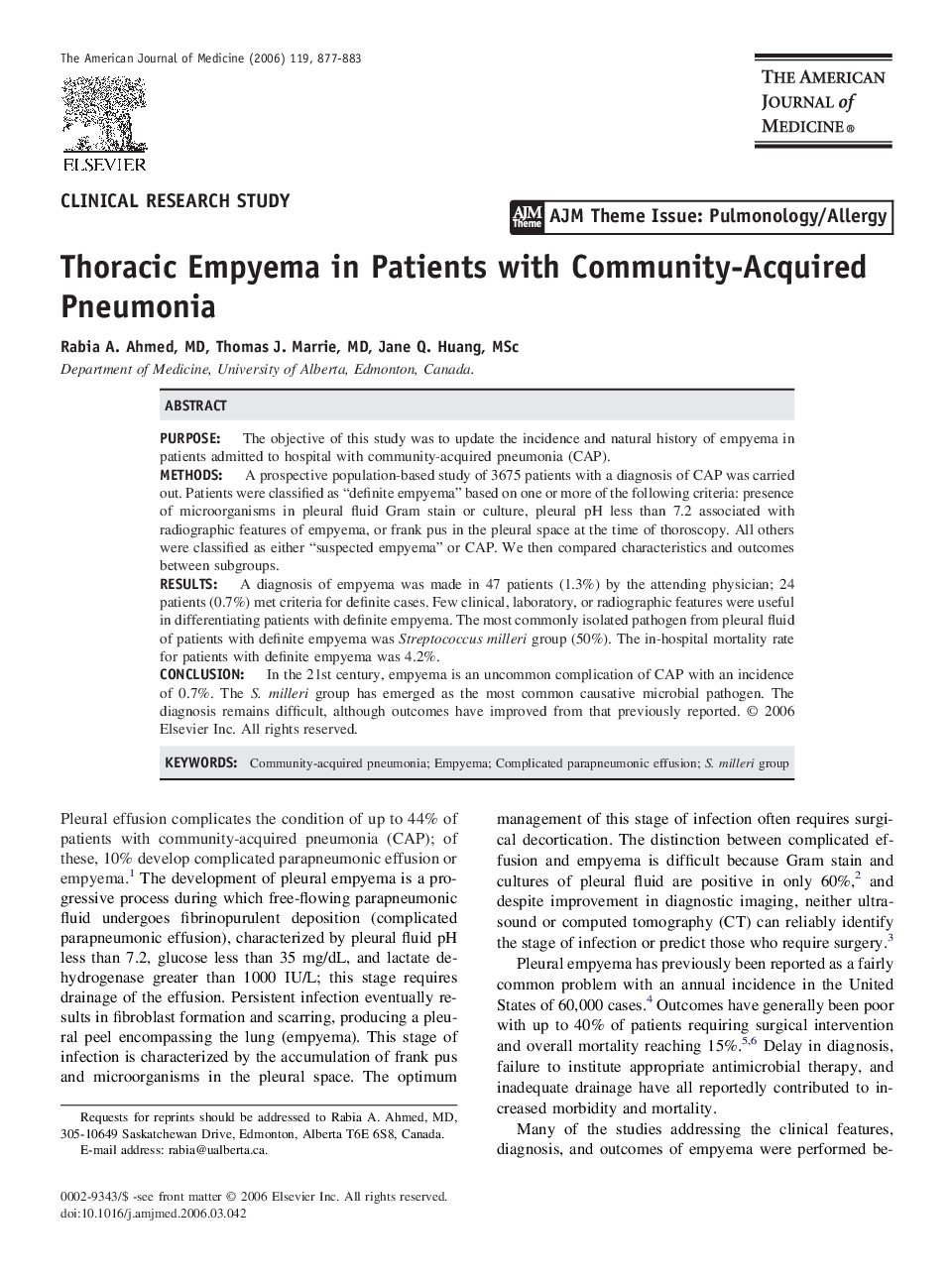| Article ID | Journal | Published Year | Pages | File Type |
|---|---|---|---|---|
| 2726085 | The American Journal of Medicine | 2006 | 7 Pages |
PurposeThe objective of this study was to update the incidence and natural history of empyema in patients admitted to hospital with community-acquired pneumonia (CAP).MethodsA prospective population-based study of 3675 patients with a diagnosis of CAP was carried out. Patients were classified as “definite empyema” based on one or more of the following criteria: presence of microorganisms in pleural fluid Gram stain or culture, pleural pH less than 7.2 associated with radiographic features of empyema, or frank pus in the pleural space at the time of thoroscopy. All others were classified as either “suspected empyema” or CAP. We then compared characteristics and outcomes between subgroups.ResultsA diagnosis of empyema was made in 47 patients (1.3%) by the attending physician; 24 patients (0.7%) met criteria for definite cases. Few clinical, laboratory, or radiographic features were useful in differentiating patients with definite empyema. The most commonly isolated pathogen from pleural fluid of patients with definite empyema was Streptococcus milleri group (50%). The in-hospital mortality rate for patients with definite empyema was 4.2%.ConclusionIn the 21st century, empyema is an uncommon complication of CAP with an incidence of 0.7%. The S. milleri group has emerged as the most common causative microbial pathogen. The diagnosis remains difficult, although outcomes have improved from that previously reported.
